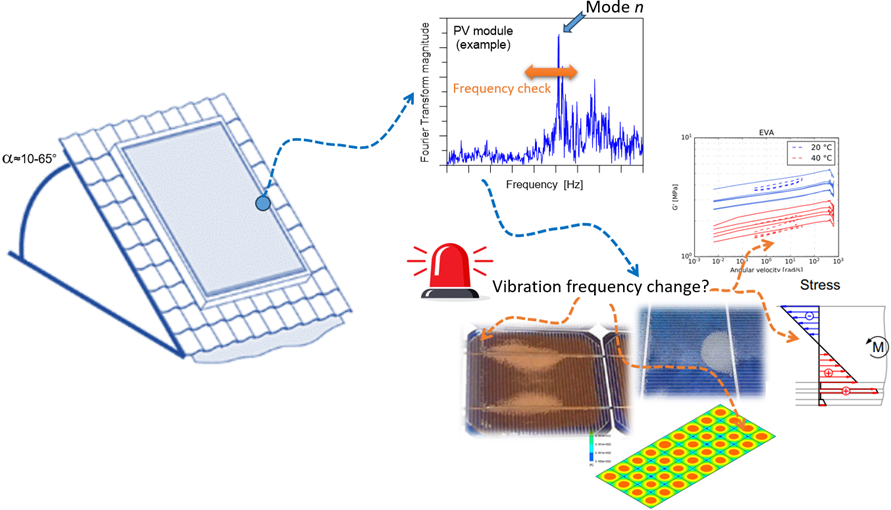Early-Detection of EVA Encapsulant Degradation in PV Modules Based on Vibration Frequency Analysis
DOI:
https://doi.org/10.47982/cgc.9.614Downloads

Abstract
In engineering applications, the frequency analysis represents a first and practical step to collect relevant parameters for structural and mechanical diagnostics. Any possible material / component degradation and deterioration can be prematurely detected by frequency modifications that exceed a certain alert value. In this paper, the attention is given to the dynamic mechanical analysis of commercial photovoltaic (PV) modules, in which the solar cells are typically encapsulated in thin viscoelastic interlayers made of Ethylene-Vinyl Acetate (EVA), which are primarily responsible for the load-bearing capacity of the sandwich PV system. As a major effect of ageing, ambient conditions, non-uniform / cyclic thermal gradients, humidity and even extreme mechanical / thermal loads, the rigidity of these films can largely modify and decrease, thus possibly affecting the mechanical capacity of the PV module, and even exposing the solar cells to fault. Knowledge of the effective bonding level is an important step for diagnostic purposes. In this regard, the present study is based on a preliminary but extensive parametric Finite Element (FE) numerical investigation of full-scale commercial PV modules of typical use in buildings. The attention is given – for PV module arrangements of technical interest – to the effect of EVA stiffness in terms of vibration modes and especially frequency sensitivity. As shown, when compared to newly installed PV modules, any kind of stiffness decrease is associated to major frequency modifications for the composite system, and in the worst configuration, such a frequency scatter can decrease down to -40% the original condition. Such a marked stiffness decrease would be implicitly associated to a weak mechanical performance of the sandwich section, with major stress peaks and deflections in the PV system, even under ordinary loads. The presented results, in this sense, suggest that major consequences can be prevented and minimized by monitoring the vibration frequency of PV modules.
Published
Issue
Section
Smart Glazing, Solar & BIPV
License
Copyright (c) 2024 Chiara Bedon, Alessandro Massi Pavan, Nicola Cella, Nicola Blasuttigh

This work is licensed under a Creative Commons Attribution 4.0 International License.



